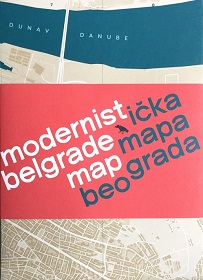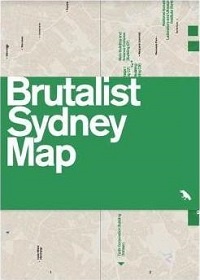Main author
Michael BrooksArchitecture maps - more reviews
Contents |
[edit] Introduction
The independent publisher Blue Crow Media continues to amass a delightful portfolio of architecture city maps. Designing Buildings Wiki has previously published reviews of them here:
In 2017, they published three more to add to the collection. Eager architecture tourists should get copies of these, given that they are perhaps the most well-presented and researched maps of their kind currently available.
[edit] Modernist Belgrade
This map illustrates the reconstruction and development of the war-torn Belgrade during the second part of the 20th century as the capital of Yugoslavia. Despite not being the first city that springs to mind when considering interesting architecture, the map demonstrates quite clearly the range and extent of modernist buildings created by the generation of Yugoslav architects that came to prominence during the 1960s.
Perhaps the most famous of Belgrade's modernist buildings is the Western City Gate, although there are numerous others worthy of equal merit. Many of these are arranged across the city in relatively close proximity to each other, making this map the perfect basis for a walking tour.
[edit] Brutalist Sydney
Most people would probably be hard-pressed to identify a building in Sydney aside from the Sydney Opera House, but that's not to say that it doesn't have an eclectic array of Brutalist buildings that are emblematic of a unique period of socio-political thinking.
Sydney's exploration of Brutalism began and ended later than Europe. It was well-adopted by the mid-1970s and became a monumental and distinctly civic style by the 1980s.
The high-quality concrete craftsmanship and structural details conveying 'memorable form' are evident on many different buildings, with the map pointing out that the often sun-drenched city is 'the perfect setting to highlight the textured surfaces of this European-derived ethos.'
[edit] Brutalist Paris
The Parisian suburbs are known for their grands ensembles; massive suburban apartment complexes built in the 1950s and 1960s. A very different Paris from the one most are familiar with can be experienced through the city's abundant Brutalist architecture.
Unlike other European capitals, Brutalism did not produce many cultural buildings in the city centre, but was instead largely restricted to housing, administrative, office and university campus buildings. Most of these are to be found beyond the Peripherique in the zones of urban expansion developed in the second half of the 20th century (and somewhat frustratingly, located beyond the limits of map).
Two of the most striking examples of monolithic residential buildings singled out are Les Damiers Logements and Les Orgues de Flandre Logements.
[edit] Related articles on Designing Buildings Wiki
Featured articles and news
RTPI leader to become new CIOB Chief Executive Officer
Dr Victoria Hills MRTPI, FICE to take over after Caroline Gumble’s departure.
Social and affordable housing, a long term plan for delivery
The “Delivering a Decade of Renewal for Social and Affordable Housing” strategy sets out future path.
A change to adoptive architecture
Effects of global weather warming on architectural detailing, material choice and human interaction.
The proposed publicly owned and backed subsidiary of Homes England, to facilitate new homes.
How big is the problem and what can we do to mitigate the effects?
Overheating guidance and tools for building designers
A number of cool guides to help with the heat.
The UK's Modern Industrial Strategy: A 10 year plan
Previous consultation criticism, current key elements and general support with some persisting reservations.
Building Safety Regulator reforms
New roles, new staff and a new fast track service pave the way for a single construction regulator.
Architectural Technologist CPDs and Communications
CIAT CPD… and how you can do it!
Cooling centres and cool spaces
Managing extreme heat in cities by directing the public to places for heat stress relief and water sources.
Winter gardens: A brief history and warm variations
Extending the season with glass in different forms and terms.
Restoring Great Yarmouth's Winter Gardens
Transforming one of the least sustainable constructions imaginable.
Construction Skills Mission Board launch sector drive
Newly formed government and industry collaboration set strategy for recruiting an additional 100,000 construction workers a year.
New Architects Code comes into effect in September 2025
ARB Architects Code of Conduct and Practice available with ongoing consultation regarding guidance.
Welsh Skills Body (Medr) launches ambitious plan
The new skills body brings together funding and regulation of tertiary education and research for the devolved nation.
Paul Gandy FCIOB announced as next CIOB President
Former Tilbury Douglas CEO takes helm.
UK Infrastructure: A 10 Year Strategy. In brief with reactions
With the National Infrastructure and Service Transformation Authority (NISTA).


























